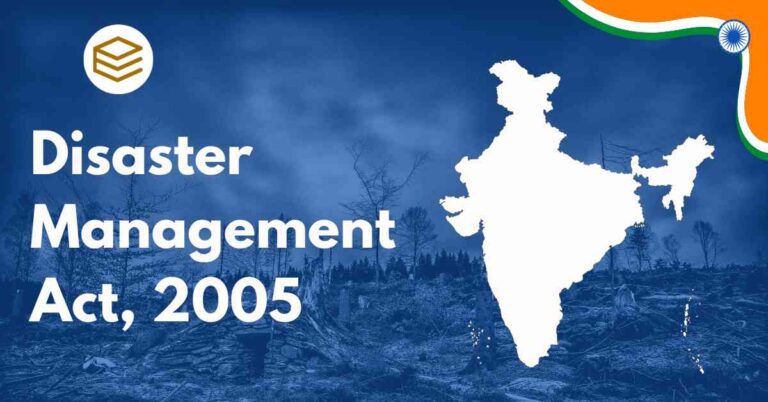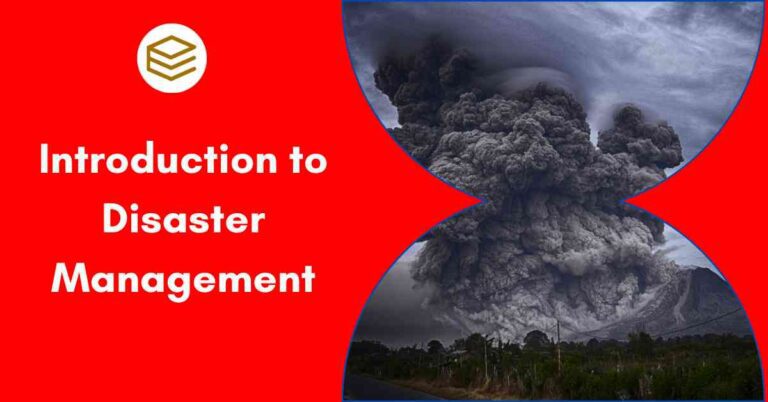October 25, 2025 5:27 am
The Disaster Management Cycle includes a comprehensive set of activities, programs, and measures designed to address the phases of a disaster. It consists of actions that are taken before, during, and after a disaster to reduce risks, minimize damage, and aid recovery. The cycle can be divided into two primary phases:
- Pre-Disaster Risk Management Phase:
- Focuses on prevention, mitigation, and preparedness to reduce the likelihood and impact of a disaster.
- Post-Disaster Crisis Management Phase:
- Involves relief, response, rehabilitation, reconstruction, and recovery to help affected communities rebuild and return to normalcy.
Key Stages in the Disaster Management Cycle
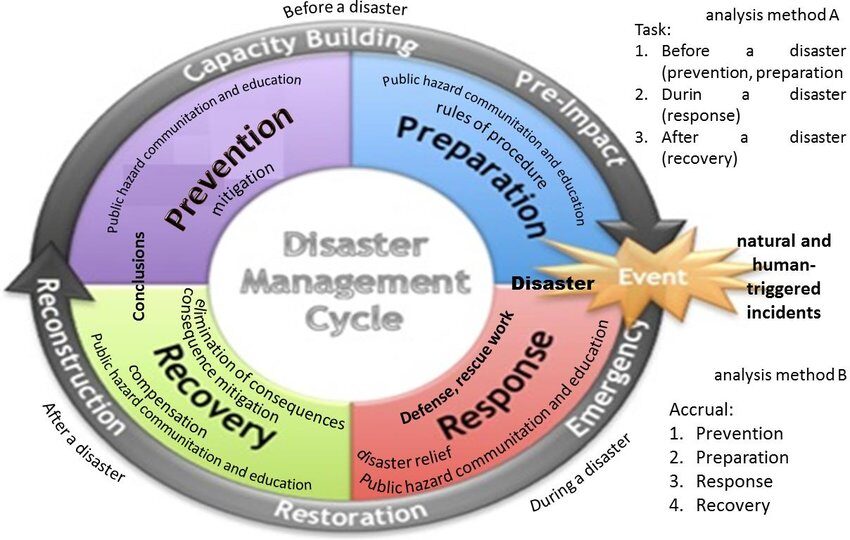
1. Before a Disaster (Pre-Disaster Phase)
This phase focuses on reducing risks and vulnerabilities through proactive planning and preparedness measures. Activities include:
- Prevention:
Steps to avoid or reduce the occurrence of disasters.
Examples:- Building earthquake-resistant structures.
- Constructing flood embankments to protect vulnerable areas.
- Implementing afforestation and watershed management to stabilize ecosystems.
- Mitigation:
Actions aimed at reducing the impact of potential disasters.
Examples:- Enforcing building codes to ensure safety standards.
- Developing early warning systems for cyclones, floods, and other hazards.
- Conducting awareness campaigns to educate communities about risks and safety measures.
- Preparedness:
Ensuring that communities, governments, and organizations are ready to respond effectively.
Examples:- Establishing evacuation plans and conducting mock drills.
- Stockpiling emergency supplies, such as food, water, and medical kits.
- Training first responders and community volunteers.
2. During a Disaster (Disaster Occurrence Phase)
This phase involves rapid response to address the immediate needs of those affected by the disaster. The goal is to alleviate suffering, minimize losses, and provide critical support.
- Primary Activities:
These are essential during the crisis and include:- Evacuation: Moving people from danger zones to safe areas.
- Search and Rescue: Locating and rescuing those trapped or injured.
- Provision of Basic Needs:
- Food, clothing, and shelter.
- Medical aid to treat injuries and prevent disease outbreaks.
- Distribution of relief materials, such as blankets and clean water.
- Coordination:
Ensuring seamless collaboration between government agencies, non-profits, and international organizations for efficient disaster response.
3. After a Disaster (Post-Disaster Phase)
The post-disaster phase focuses on recovery, rehabilitation, and reconstruction to restore communities to normalcy and enhance resilience against future disasters.
- Recovery:
Policies and procedures are implemented to restore critical systems and infrastructure. Examples:- Rebuilding communication networks and transportation systems.
- Restoring power grids and water supply.
- Rehabilitation:
This involves restoring essential services and supporting individuals and communities in rebuilding their lives. Examples:- Assisting victims in repairing homes and community facilities.
- Supporting local businesses to restart economic activities.
- Providing psychosocial support to address trauma.
- Reconstruction:
Focused on rebuilding damaged infrastructure and creating sustainable livelihoods.
Examples:- Constructing disaster-resilient buildings and infrastructure.
- Incorporating disaster risk reduction into long-term development plans.
- Implementing strategies to reduce future vulnerabilities, such as zoning laws to avoid high-risk areas.
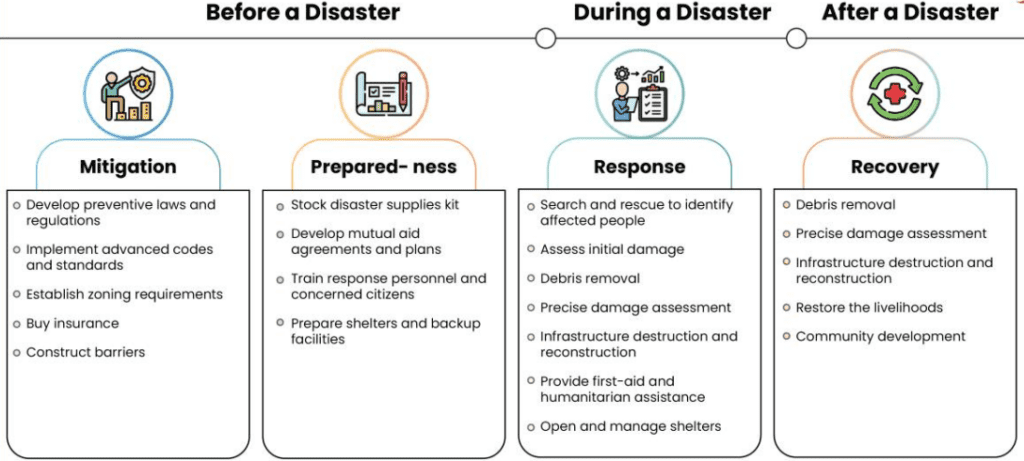
Integration of the Disaster Management Cycle
The disaster management cycle must be an ongoing process, with each phase feeding into the next to ensure continuous improvement. For example:
- Prevention and mitigation in the pre-disaster phase reduce the need for extensive relief efforts during and after a disaster.
- Recovery and reconstruction after a disaster offer opportunities to integrate better planning and risk reduction measures into future development.
By following this cycle, communities can not only rebuild after disasters but also become more resilient to future risks.
Disaster Preparedness in Disaster Management Cycle
What is Disaster Preparedness?
In Disaster Management Cycle Disaster preparedness refers to the actions, strategies, and measures taken to anticipate, prepare for, and reduce the potential impacts of disasters. It aims to minimize loss of life, property, and livelihoods by ensuring that individuals, households, communities, and governments are ready to respond effectively and recover quickly from disaster events.
Disaster preparedness involves a proactive approach, focusing on:
- Predicting and preventing disasters wherever possible.
- Mitigating the impacts of disasters on vulnerable populations.
- Developing effective response mechanisms to cope with the consequences of disasters.
Levels of Disaster Preparedness
Preparedness activities can be implemented at various levels, each playing a critical role in ensuring community resilience.
- Individual-Level Preparedness:
- Equipping individuals with the knowledge and skills to protect themselves during disasters.
- Examples:
- Learning first aid and basic life-saving techniques.
- Understanding evacuation routes and safety protocols.
- Household-Level Preparedness:
- Ensuring that families have the tools and resources needed to cope with emergencies.
- Examples:
- Stockpiling emergency supplies like non-perishable food, water, flashlights, and first aid kits.
- Creating a family evacuation plan and designating meeting points.
- Community-Level Preparedness:
- Engaging communities in collaborative efforts to prepare for disasters.
- Examples:
- Organizing training sessions and mock disaster drills.
- Establishing emergency shelters and ensuring community-wide access to safety equipment.
- Governmental-Level Preparedness:
- Developing comprehensive disaster management policies and systems at regional and national levels.
- Examples:
- Implementing early warning systems to predict and communicate impending disasters.
- Creating contingency plans and mapping evacuation routes.
- Disseminating public awareness campaigns to educate citizens on disaster readiness.
Transition from Traditional to Modern Approaches in Disaster Management Cycle
Historically, disaster management was centered around the 3 Rs:
- Rescue: Saving lives during and immediately after disasters.
- Relief: Providing essential aid to affected populations.
- Restoration: Rebuilding infrastructure and livelihoods post-disaster.
However, modern Disaster Management Cycle emphasizes proactive planning and resilience building, shifting to the 3 Ps:
- Prevention: Taking steps to eliminate or reduce disaster risks (e.g., constructing flood barriers, enforcing building codes).
- Preparedness: Equipping communities to face disasters (e.g., training programs, stockpiling resources).
- Proofing: Building long-term resilience against future disasters (e.g., creating disaster-proof infrastructure).
Importance of Disaster Preparedness in Disaster Management Cycle
- Saves Lives and Reduces Injuries:
- Advanced warning and preparation ensure people can evacuate safely and avoid harm.
- Minimizes Economic Losses:
- Preparedness reduces the cost of response and recovery by mitigating damage to property and infrastructure.
- Empowers Communities:
- Training and awareness programs help communities take charge of their own safety.
- Builds Resilience:
- Preparedness creates systems and infrastructure that are better equipped to handle future disasters, reducing long-term vulnerabilities.
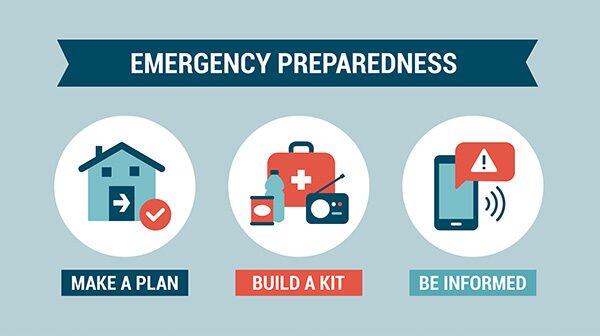
Preparedness is defined by the United
Nations International Strategy for
Disaster Reduction (UNISDR) as
knowledge, capabilities, and actions of
governments, organizations, community
groups, and individuals “to effectively
anticipate, respond to, and recover from,
the impacts of likely, imminent or
current hazard events or conditions.”
Disaster Risk Reduction and Planning in Disaster Management Cycle
What is Disaster Risk Reduction?
Disaster Risk Reduction (DRR) in Disaster Management Cycle refers to the strategies and practices aimed at minimizing the risks associated with disasters. It focuses on reducing exposure to hazards, decreasing vulnerabilities, and enhancing preparedness to prevent or mitigate the adverse impacts of disasters. Effective DRR combines risk management, environmental planning, and community resilience-building at local, national, and international levels.
DRR encompasses a range of activities, including prevention, preparedness, and mitigation, to create safer, more resilient societies.
Key Components of Disaster Risk Reduction Framework
The DRR framework is built on a series of actions designed to identify, manage, and reduce disaster risks effectively. These include:
- Policy Framework Supported by Legal and Institutional Mechanisms:
- A comprehensive policy framework for disaster risk management must be developed. This framework should be backed by laws and institutional mechanisms that focus on reducing risks rather than responding to disasters alone.
- Example: Establishing disaster management authorities or departments at the national and local levels.
- Risk Assessment:
- Conducting detailed assessments of hazards and community resilience to identify vulnerabilities and potential impacts.
- Example: Mapping flood-prone areas or analyzing the structural safety of buildings in earthquake-prone zones.
- Risk Awareness:
- Once risks are identified, stakeholders and decision-makers must be made aware of these risks. This helps governments and civil society take informed decisions about disaster risk reduction measures.
- Example: Public awareness campaigns on the importance of building codes or preparedness drills.
- Implementation of Risk Reduction Plans:
- Risk reduction plans must be implemented in consultation with all stakeholders. These plans should include measures like:
- Environmental management: Preserving forests to prevent landslides.
- Urban planning: Designing cities with adequate drainage systems to reduce flood risks.
- Example: Ensuring zoning regulations prevent construction in high-risk areas.
- Risk reduction plans must be implemented in consultation with all stakeholders. These plans should include measures like:
- Early Warning Systems:
- Establishing reliable early warning systems to provide timely and accurate information about potential hazards. This enables communities to prepare and respond effectively.
- Example: Weather forecasting systems to warn about cyclones or tsunamis.
- Knowledge Sharing and Communication:
- DRR requires the participation of all stakeholders, which depends on clear and accessible communication practices. Sharing knowledge and best practices strengthens community preparedness and resilience.
- Example: Creating online portals or mobile apps to share disaster preparedness information.
Prime Minister’s Ten-Point Agenda on Disaster Risk Reduction (DRR)
During the Asian Ministerial Conference on Disaster Risk Reduction (AMCDRR) in November 2016, the Prime Minister of India proposed a ten-point agenda for DRR. This agenda aligns with the Sendai Framework for Disaster Risk Reduction 2015-2030 and takes a holistic approach to reducing disaster risks by addressing a range of critical issues.
Highlights of the Ten-Point Agenda:
- All Development Sectors Must Address DRR:
- Every sector, including agriculture, education, and urban development, should integrate disaster risk management into their planning.
- Risk Mapping and Vulnerability Assessment:
- Use scientific tools and technology to conduct risk mapping and identify vulnerabilities at all levels.
- Investment in DRR:
- Governments must allocate resources for disaster-resilient infrastructure and technology.
- Early Warning Systems:
- Strengthening early warning mechanisms to improve preparedness.
- Community Preparedness:
- Building community resilience through awareness campaigns and training programs.
- Use of Technology:
- Leverage technology like GIS mapping, remote sensing, and mobile apps for efficient risk management.
- Capacity Building:
- Invest in training programs for stakeholders and volunteers involved in disaster response.
- Building Resilient Infrastructure:
- Focus on creating disaster-resistant infrastructure, including roads, bridges, and public utilities.
- Collaboration with the Private Sector:
- Engage private companies to develop innovative solutions for disaster risk management.
- Regional and International Cooperation:
- Foster partnerships with neighboring countries and international organizations for disaster preparedness and response.

Integration with the Sendai Framework for DRR 2015–2030
The Sendai Framework outlines four key priorities for action that align closely with the Prime Minister’s ten-point agenda:
- Understanding Disaster Risk: Conducting risk assessments and raising awareness.
- Strengthening Risk Governance: Establishing laws and policies for effective disaster risk management.
- Investing in Risk Reduction: Allocating resources for mitigation and prevention.
- Enhancing Disaster Preparedness and Resilience: Strengthening early warning systems and building community capacity.
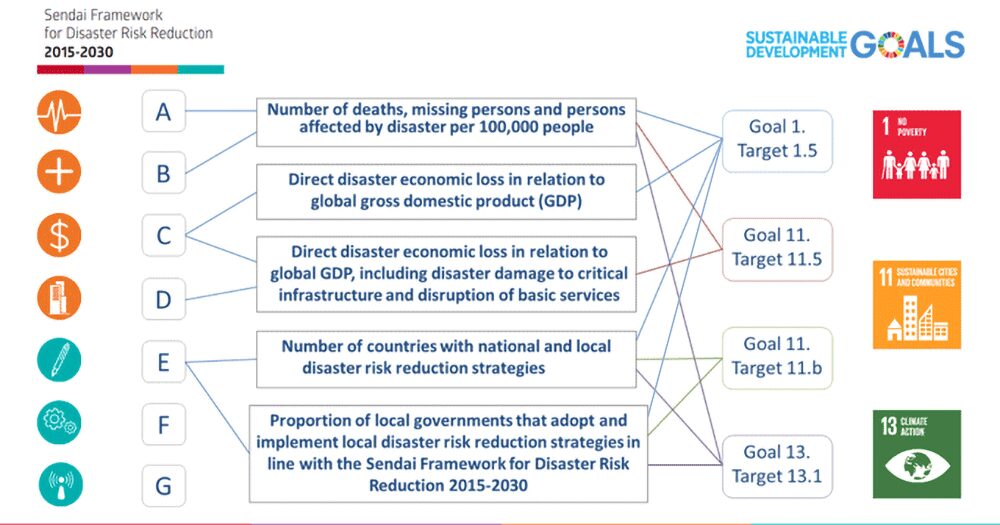
Importance of Disaster Risk Reduction
- Prevents Loss of Life and Property:
- Proactive risk reduction measures can save lives and protect assets before a disaster strikes.
- Supports Sustainable Development:
- By integrating risk reduction into urban planning and environmental policies, societies can achieve long-term sustainability.
- Empowers Communities:
- Knowledge-sharing and capacity-building activities empower local communities to take charge of their safety.
- Reduces Economic Losses:
- Effective DRR strategies lower the cost of post-disaster recovery by minimizing damage.
- Strengthens Resilience:
- Preparing for disasters enhances the ability of communities to recover quickly and reduce vulnerabilities to future hazards.
Relief and Rehabilitation in the Disaster Management Cycle
The Relief and Rehabilitation phase is a critical component of the Disaster Management Cycle, encompassing immediate actions to alleviate suffering and transitional measures to restore affected communities. It bridges the gap between the initial emergency response and long-term reconstruction, ensuring both survival and a return to normalcy.
Relief Phase
The relief phase occurs immediately after a disaster and focuses on providing life-saving assistance and meeting basic survival needs. The key goal of this phase in the disaster management cycle is to stabilize the affected area and prevent further loss of life.
Key Activities During the Relief Phase:
- Search and Rescue:
- Locating and rescuing individuals trapped in debris or stranded in dangerous areas.
- Coordinating rescue efforts with emergency responders and local volunteers.
- Rapid Damage and Needs Assessments:
- Conducting quick evaluations of the disaster’s scale and impact.
- Determining urgent requirements such as food, water, shelter, and medical supplies.
- Provision of Relief and First Aid:
- Distribution of essential supplies, including:
- Food and clean drinking water to prevent malnutrition and dehydration.
- Medical care to treat injuries and prevent the outbreak of diseases.
- Temporary shelters for displaced populations.
- Distribution of essential supplies, including:
- Humanitarian Assistance:
- Providing emotional and psychological support to survivors.
- Offering counseling services to help individuals cope with trauma.
Focus:
The relief phase prioritizes urgent actions to address immediate needs and ensure survival. This is a life-saving stage in the disaster management cycle, setting the foundation for recovery efforts.
Rehabilitation Phase
The rehabilitation phase begins after the relief phase and is transitional, aiming to restore basic functionality to the affected area. It plays a vital role in the disaster management cycle by enabling affected populations to resume normal activities.
Key Objectives of Rehabilitation:
- Restoration of Basic Services and Lifelines:
- Temporary repair and restoration of critical infrastructure, such as:
- Roads and bridges for transportation and aid delivery.
- Airports, ports, and helicopter landing sites for relief logistics.
- Essential utilities like electricity, water supply, and communication networks.
- Temporary repair and restoration of critical infrastructure, such as:
- Revival of Economic Activities:
- Rebuilding small businesses and reviving livelihoods to reduce dependence on external aid.
- Supporting agricultural and industrial activities in the region to restore economic stability.
- Support for Psychological and Social Well-being:
- Providing trauma counseling for survivors to address emotional stress.
- Organizing community-based activities to rebuild social networks and cooperation.
- Transitional Nature:
- The rehabilitation phase acts as a bridge between immediate relief efforts and long-term reconstruction. Temporary solutions are implemented to ensure essential services are functional until permanent measures are in place.
Post-Disaster Recovery and Reconstruction in the Disaster Management Cycle
The post-disaster recovery and reconstruction phase is a long-term effort aimed at restoring the affected region to its pre-disaster state or better. It integrates recovery activities with sustainable development to build disaster-resilient communities, an essential goal of the disaster management cycle.
Key Components:
- Full Restoration of Services and Infrastructure:
- Rebuilding or replacing damaged infrastructure, such as:
- Schools, hospitals, roads, and public utilities.
- Ensuring reconstruction follows disaster-resistant designs to mitigate risks in future disasters.
- Rebuilding or replacing damaged infrastructure, such as:
- Revitalization of the Economy:
- Stimulating local economies through job creation, loans, and the rebuilding of industries.
- Reopening trade routes and restoring market access.
- Restoration of Social and Cultural Life:
- Rebuilding community centers, religious institutions, and cultural heritage sites.
- Supporting the reunification of displaced families and communities.
- Integration with Long-Term Development Plans:
- Aligning reconstruction activities with broader sustainable development goals to ensure resilience.
- Incorporating disaster risk reduction measures, such as enforcing zoning laws and promoting environmental conservation.
Institutional Framework for Post-Disaster Recovery
- Long-Term Recovery Plans:
- Plans focus on rebuilding infrastructure and restoring livelihoods while institutionalizing disaster management practices.
- These plans ensure better preparedness for future disasters by strengthening local governance and disaster response frameworks.
- Deactivation of the Incident Command System (ICS):
- The ICS, used during the relief and rehabilitation phases for coordination and resource management, is deactivated as reconstruction efforts begin.
- Regular administration takes over responsibility for completing remaining recovery tasks.
Incident Command System (ICS)
The Incident Command System (ICS) is a standardized management framework used during the disaster management cycle to ensure effective coordination, communication, and resource allocation.
Key Features of ICS:
- Organized Functions:
- Clearly defined roles and responsibilities to avoid duplication of efforts.
- Flexibility:
- Scalable to manage incidents of varying sizes and complexities.
- Coordination:
- Promotes collaboration among local authorities, national agencies, and international organizations.
Example: During a flood, the ICS coordinates the deployment of rescue teams, medical aid, and logistics to ensure timely and efficient disaster response.
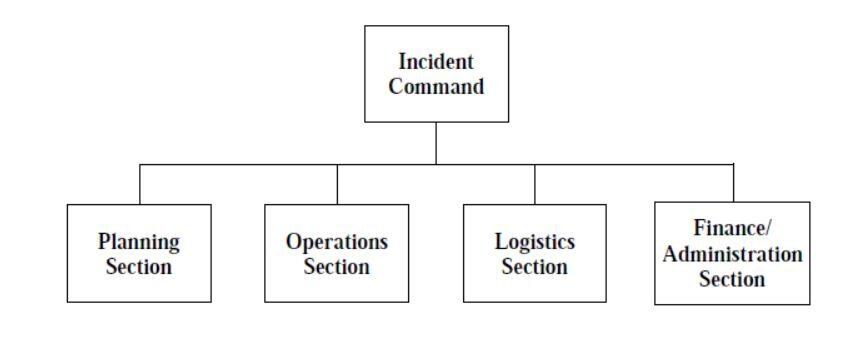
Integration of Relief, Rehabilitation, and Reconstruction in the Disaster Management Cycle
Relief, rehabilitation, and reconstruction are interconnected stages in the disaster management cycle that ensure the transition from emergency response to sustainable development. The integration of these stages builds resilience, reduces vulnerabilities, and enhances the community’s capacity to withstand future disasters.
First Read about
Introduction to Disaster management

Also Read Current Affairs Notes :
- Millennium Development Goals (MDGs): A Comprehensive Analysis
- The Chipko Movement: Hugging Trees to Save the Planet
- Global Efforts to Save Endangered Vaquita Porpoise
- 40% of the Amazon Rainforest Unprotected: Why This is Critical for Climate Change
- Reducing CO2 Emissions in India’s Transport Sector by 2050: A High-Ambition Approach
- China’s Carbon Market and Its Mechanisms
- India’s Greenhouse Gas Emissions Increase Since 2021
- Mankidia Community Becomes the 6th PVTG to Get Habitat Rights Over Forests in Odisha
- Indian Megacities Lag in Air Pollution Control Despite Lion’s Share of Financial Support
- Sustainable Development Goals (SDGs): Relevance in UPSC Mains and Prelims
- Water Security in India: Challenges and Solutions
- Sustainable Development Goals (SDGs): A Comprehensive Analysis 2025
- 2030 Agenda for Sustainable Development: A Comprehensive Analysis



